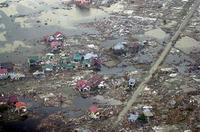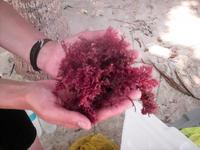-
Canada launches TB website to stem spread of disease
Researchers at Canada’s McGill University recently launched a free website to help doctors around the world stem the spread of tuberculosis (TB); the website offers detailed information on TB vaccinations in over 180 countries; while TB levels are at all-time lows in Canada and the United States, TB has grown increasingly prevalent around the world particularly in Africa and India; in India, there are nearly two million new cases of TB each year and it is the leading cause of death among people between the ages of fifteen and forty-five; the International Federation of Red Cross and Red Crescent Studies recently warned that up to ten million people could die of TB by 2015; if detected early, TB can be treated with antibiotics
-
-
Australia battling mosquitoes to stop spread of dengue fever

Public health officials in Queensland in northern Australia are actively battling dengue fever following an outbreak of the virus; fifty-five people have been infected in Innisfail and its outlying areas; two cases of dengue fever have been detected in Cairns, 56 miles north of Innisfail; to stem the spread of the disease, public health officials are on a campaign to eradicate mosquitos and their breeding grounds; so far the government has wiped out an estimated 50,000 mosquito breeding sites; in one week, fourteen public health field officers searched 1,117 properties in Innisfail and found 13,628 potential breeding sites
-
-
Ticks identified as cause of lethal disease in China

In 2006 villagers in Anhui Province in central China began dying of an illness characterized by high fever, gastrointestinal distress, and a depressed platelet count; researchers suspected anaplasmosis, an infection spread by ticks caused by the bacterium Anaplasma phagocytophilum – but they found neither bacterial DNA nor antibodies against it; each spring since then the disease has struck with a vengeance, killing up to 30 percent of those infected in six provinces of China; scientists have now identified the enemy
-
-
Stemming the spread of disease at airports

With roughly two million people flying each day and spending hours in confined areas where they will come into close contact with potentially infected people, air travel poses a serious challenge to public health officials seeking to contain major disease outbreaks; last month public health officials scrambled to contain a potential mass outbreak of measles after a woman flew through three U.S airports, coming into contact with thousands of people; a CDC report recommends using infrared thermal scanners to detect passengers with fevers as that is an easily recognizable symptom and it is a common indicator of most infectious diseases
-
-
Malaria increasingly resistant to drugs, seaweed could be the answer

Researchers recently found a natural substance that can destroy the malaria parasite; the substance is from a red seaweed found off the island of Fiji; the discovery of the substance comes at a much needed time as malaria has developed increasing resistance to existing drugs; the new substance comes from a chemical that that the plant uses to defend against marine fungi; it is entirely different than existing drugs and could be the key against fighting drug-resistant strains of malaria; the substance must still undergo further laboratory tests before it can be used in clinical trials
-
-
Netherlands battles to contain Q fever outbreak
The Netherlands has struggled to contain an outbreak of Q fever that first began in 2007; since the outbreak started there have been more than 4,000 confirmed cases of the disease and eleven deaths; farm animals are the primary carriers of the bacteria, and humans can become infected by breathing in contaminated air or consuming infected dairy products; after more than 2,200 people became sick in 2009, the Dutch government slaughtered over 50,000 goats in an effort to stem the spread of the disease; veterinarians and epidemiologists from around the world are watching the outbreak closely to learn more about the disease and how it is spreading; the Center for Disease Control and Prevention (CDC) had confirmed eight cases for 2011
-
-
U.S. unprepared for climate-induced disease outbreaks
Officials warn that the United States is not equipped to handle the spread of infectious diseases caused by climate change; little investment or progress has been made in bolstering disease detection and response capabilities in the United States, despite warnings from intelligence agencies; increased heat, humidity, and rainfall have caused the spread of mosquitoes and other bugs which carry deadly tropical diseases to new areas where people have yet build up a resistance; the United States is now experiencing outbreaks of dengue fever and West Nile virus; in 2010 the CDC reported 110 deaths and 1,356 cases of West Nile virus in the United States; intelligence agencies also worry about the potential for the spread of these diseases to destabilize fragile nations across Asia and Africa
-
-
New Zealand fears uncontrollable measles outbreak
Public health officials in New Zealand are racing to contain a measles outbreak that may have infected more than 300 people; measles is a highly infectious virus that can be spread through sneezing or coughing; the outbreak began with nine infected passengers aboard a flight; so far officials have identified eleven cases; two cases were from people not aboard the flight suggesting that the disease has begun to spread from person to person; out of every 1000 cases, there is typically one death and 100 hospital admissions; health officials are racing to identify people who may have come into contact with the infected and limit exposure; officials are concerned that they cannot contain the spread of the disease
-
-
A fast, simple test for detecting cholera
The new detection method uses specially prepared nanoparticles of iron oxide, each barely 1/50,000th the width of a single human hair, coated with a type of sugar called dextran; to achieve this, the scientists looked for specific characteristics of the cholera toxin receptor (GM1) found on cells’ surface in the victim’s gut, and then they introduced these features to their nanoparticles; when the magnetic nanoparticles are added to water, blood, or other fluids to be tested, the cholera toxin binds to the nanoparticles in a way that can be easily detected by instruments
-
-
Universal flu vaccine within sight
People need to be vaccinated against flu every year because the flu virus is a scam artist: it uses a big, showy surface protein — and there are sixteen different varieties of this protein, called Hemagglutinin (HA) — to attract your immune system, then changes it so your immune system would not recognize it next time round; vaccines must thus change yearly to match it; scientists discover HA’s Achilles Heel: a vital part of the HA’s viral machinery does not vary much over time or between viruses, meaning that a vaccine based on the this part would be a universal flu vaccine
-
-
T cells offer new promise for vaccines for plague and bacterial pneumonias
There is currently no licensed plague vaccine in the United States, which is too bad because Yersinia pestis is arguably the most deadly bacteria known to man; most of the plague vaccine candidates that have been studied aim to stimulate B cells to produce plague-fighting antibodies, but animal studies suggest that antibodies may not be enough to protect humans from pneumonic plague; new studies show that T cells can also fight plague — and may be better candidates with which to develop a plague vaccine
-
-
Malaysia releases GM mosquitoes in landmark trial
Dengue infection leads to a sudden onset of fever with severe headaches, muscle and joint pains, and rashes, which can lead to death if left untreated; the infection killed at least 134 people last year in Malaysia alone; Malasia’s health authorities have released 6,000 genetically modified mosquitoes designed to combat dengue fever, in a landmark trial slammed last week by environmentalists who say the experiment is unsafe
-
-
Smallpox remains a large threat and issue of contention
Smallpox has been estimated to have taken the lives of an estimated 300-500 million people during the twentieth century; the last two known remaining locations of the virus which triggers the disease are the Center for Disease Control in Atlanta, Georgia, and the State Research Center of Virology and Biotechnology (VECTOR) near Novosibirsk in Russia; there is an intense debate among scientists about whether these last remaining samples should be destroyed; proponents of destruction say the remaining cultures may one day be used as bioweapons, while opponents of destruction say that destroying the cultures would not make any difference because terrorists could develop synthetic smallpox virus to use as weapon
-
-
Water test could enable post-earthquake cholera detection
There are an estimated three to five million cholera cases and 100,000 to 120,000 deaths worldwide each year; a new technique developed by University of Central Florida (UCF) scientists could allow earthquake-relief workers to test water sources that could be contaminated with the cholera toxin
-
-
California mandates vaccinations after worst Whooping Cough epidemic in 60 years
In 2010 California experienced the worst epidemic of whooping cough since 1947; the disease killed ten and infected more than 7,800 people; to avoid another outbreak a new California law requires children in seventh to twelfth grades to be vaccinated against Whooping Cough; the outbreak may have been the result of decreases in vaccinations among children
-
- All
- Regional
- Water
- Biometrics
- Borders/Immig
- Business
- Cybersecurity
- Detection
- Disasters
- Government
- Infrastructure
- International
- Public health
- Public Safety
- Communication interoperabillity
- Emergency services
- Emergency medical services
- Fire
- First response
- IEDs
- Law Enforcement
- Law Enforcement Technology
- Military technology
- Nonlethal weapons
- Nuclear weapons
- Personal protection equipment
- Police
- Notification /alert systems
- Situational awareness
- Weapons systems
- Sci-Tech
- Sector Reports
- Surveillance
- Transportation
Advertising & Marketing: advertise@newswirepubs.com
Editorial: editor@newswirepubs.com
General: info@newswirepubs.com
2010-2011 © News Wire Publications, LLC News Wire Publications, LLC
220 Old Country Road | Suite 200 | Mineola | New York | 11501
Permissions and Policies
Editorial: editor@newswirepubs.com
General: info@newswirepubs.com
2010-2011 © News Wire Publications, LLC News Wire Publications, LLC
220 Old Country Road | Suite 200 | Mineola | New York | 11501
Permissions and Policies
